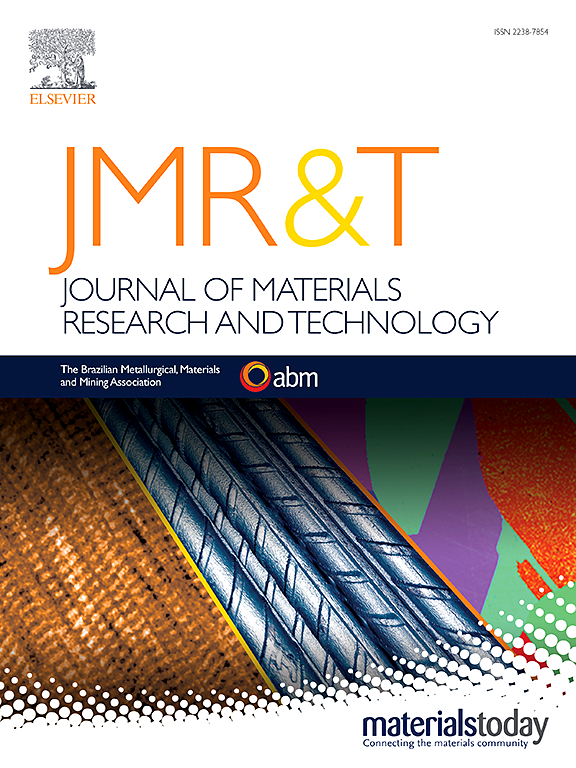深入研究和优化工艺参数,提高FDM技术中PETG的抗拉和抗压强度
IF 6.2
2区 材料科学
Q1 MATERIALS SCIENCE, MULTIDISCIPLINARY
Journal of Materials Research and Technology-Jmr&t
Pub Date : 2025-06-04
DOI:10.1016/j.jmrt.2025.06.013
引用次数: 0
摘要
3D打印和增材制造(AM)的出现标志着原型设计的一个重要里程碑。熔融沉积建模(FDM),特别是与PETG(聚对苯二甲酸乙二醇酯),已获得突出。本研究通过改变填充模式和光栅角度,并将填充密度从100%降低到50%,研究了使用FDM技术打印的PETG样品的力学性能(拉伸和压缩)和结构特性。随后采用响应面法(RSM)来检查实验数据并确定对机械性能有实质性影响的参数。抗拉强度试验结果表明,同心花纹的极限抗拉强度(UTS)最大,为25.63 MPa,杨氏模量(E)最大,为0.57 GPa。通过压缩分析,发现栅格角为45°的Cubic充填模式最大抗压强度为20.00 MPa,抗压模量为2.47 GPa。与其他模式相比,这种设计表现出更好的吸收压缩力的能力,这导致了各种行业,如汽车、消费品和生物医学设备。此外,利用RSM建立了PETG材料属性优化的回归方程,决定系数(R2)值超过75%,表明该方程是非常合适的。RSM清楚地表明,填充模式和光栅角度对FDM零件的物理性能有实质性的影响。本文章由计算机程序翻译,如有差异,请以英文原文为准。
In-depth study and optimization of process parameters to enhance tensile and compressive strengths of PETG in FDM technology
The advent of 3D printing and additive manufacturing (AM) marked a significant milestone in prototyping. Fused Deposition Modeling (FDM), particularly with PETG (polyethylene terephthalate glycol), has gained prominence. This study investigates the mechanical properties (tensile and compressive) and structural characteristics of PETG samples printed using FDM technology by varying the infill pattern and raster angle and reducing the infill density from 100 % to 50 %. The Response Surface Methodology (RSM) is subsequently employed to examine the experimental data and identify the parameters that substantially influence mechanical properties. According to the tensile strength testing results, the concentric pattern had the greatest values of Ultimate Tensile Strength (UTS) 25.63 MPa and Young's Modulus (E) 0.57 GPa. By conducting compression analysis, it was found that the Cubic infill pattern with 45° raster angle exhibited the maximum compressive strength of 20.00 MPa and Compressive Modulus of 2.47 GPa. This design demonstrated a superior ability to absorb compressive force when compared to the other patterns which leads to various industries such as automotive, consumer products, and biomedical devices. Additionally, the regression equations were formulated utilizing the RSM in order to optimize the attributes of the PETG material, the coefficient of determination (R2) value exceeding 75 %, indicating that they are highly suitable. The RSM clearly demonstrates that both the infill pattern and raster angle have a substantial impact on the physical properties of the FDM parts.
求助全文
通过发布文献求助,成功后即可免费获取论文全文。
去求助
来源期刊

Journal of Materials Research and Technology-Jmr&t
Materials Science-Metals and Alloys
CiteScore
8.80
自引率
9.40%
发文量
1877
审稿时长
35 days
期刊介绍:
The Journal of Materials Research and Technology is a publication of ABM - Brazilian Metallurgical, Materials and Mining Association - and publishes four issues per year also with a free version online (www.jmrt.com.br). The journal provides an international medium for the publication of theoretical and experimental studies related to Metallurgy, Materials and Minerals research and technology. Appropriate submissions to the Journal of Materials Research and Technology should include scientific and/or engineering factors which affect processes and products in the Metallurgy, Materials and Mining areas.
 求助内容:
求助内容: 应助结果提醒方式:
应助结果提醒方式:


